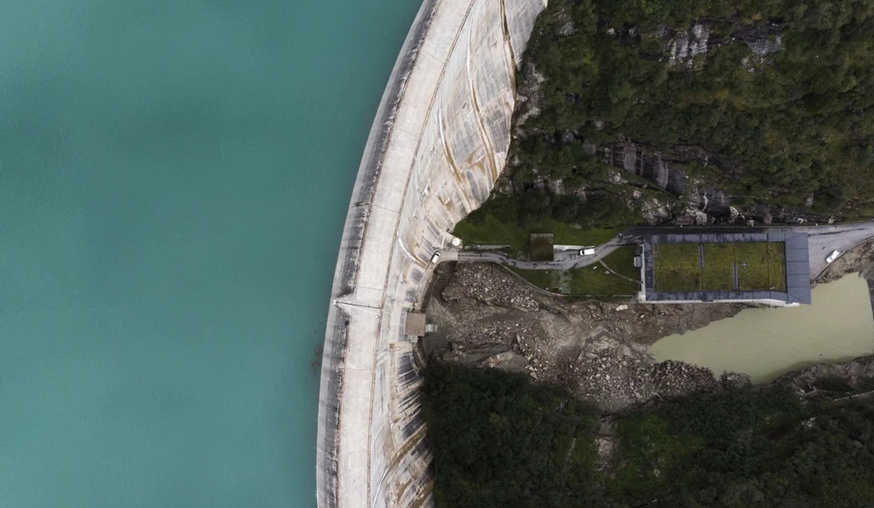Authorities, environmental groups, and energy providers have named 15 major hydropower projects that could help Switzerland achieve energy security and a green transition over the coming decades.
The projects were chosen for their energy efficiency potential as well as their minimal impact on biodiversity and the landscape, the groups wrote in a joint declaration on Monday. It was the third time that the “round-table” had met since August 2020.
Should the 15 projects see the light of day, they could lead to a combined seasonal total of two terawatts (i.e. two trillion watts) by 2040. One of them, a proposed 85-metre high dam near the Matterhorn in south-western Switzerland, would produce enough energy to power 150,000 households per year.
The environmental groups involved – notably Pro Natura, the Swiss Fish Federation, and WWF Switzerland – wrote in a joint reactionExternal link that the plans show the “still existing potential of hydropower for an environmentally sustainable energy shift”.
Axpo, Switzerland’s biggest renewable energy producer, also welcomed the outcome as an important step, but said it was “not enough, by a long way”: in order to guarantee winter supplies, some 12 terawatts of new energy – i.e. six times what these projects would offer – needs to be produced in the future, Axpo says.
Water works
Switzerland is already quite a hydro-dependent country, with its dams and Alpine reservoirs contributing some 56% of the electricity grid. The rest comes from nuclear (35%), fossil-fuels (3%), and other renewable sources (6%).
However, the government has recently warned that the country could face significant electricity shortages in the short and medium term, particularly if an agreement on technical cooperation with the European Union regarding supply is not reached.
Under the government’s Energy Strategy 2050, approved by voters in 2017, the country is also on a course of gradually phasing out nuclear power in order to focus more on renewables.
As for the 15 projects in question, they are not yet approved, and would still need to be given the all-clear by cantonal oversight bodies. Opposition is to be expected, the Keystone-SDA news agency writes.
Of the projects listed in the joint declarationExternal link, eight are in canton Valais, three in Bern, two in Graubünden, and one each in Ticino and Uri.
Full story here Are you the author? Previous post See more for Next postTags: Environment,Featured,newsletter

































